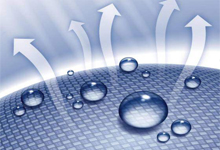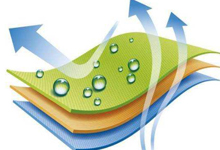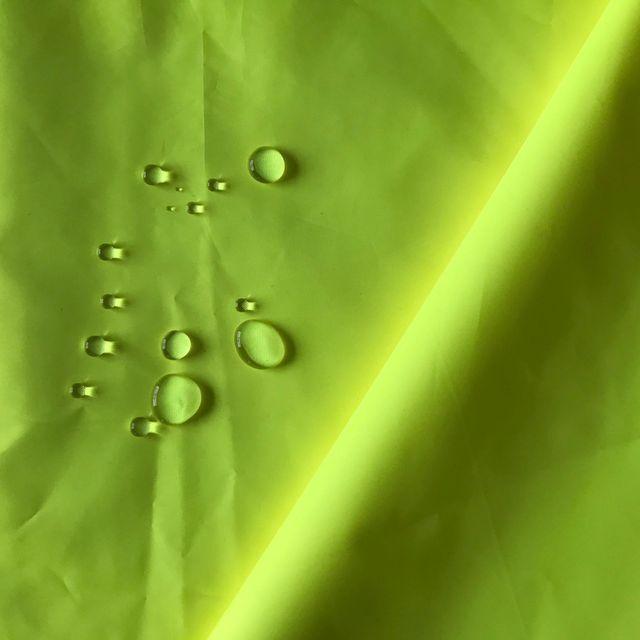Uncovering the secret of flame retardant fiber
RevealingFlame-retardant fiber
Flame-retardant protective clothing is one of the most widely used types of personal protective equipment. Its protection principle is mainly to use shielding functions such as heat insulation, reflection, absorption, and carbonization isolation to protect workers from open flames or heat sources.

Human skin is very sensitive to heat. Burns will occur when the skin comes into contact with high temperatures above 44°C. First, trauma will occur to form I-degree burns, and then blistering will occur, resulting in II-degree burns. At 55°C, first-degree burns last for 20 seconds, and then second- and third-degree burns appear.
At 72°C, it is completely burnt. Therefore, in many industries such as petroleum, chemical industry, machinery, forestry, construction, etc., flame-retardant protective clothing should be used to better protect the lives and safety of ordinary workers.
Types of flame retardant protective clothing
The materials of flame-retardant protective clothing can be roughly divided into two categories. One type is finished flame-retardant fabrics obtained by flame-retardant finishing of fabrics using flame-retardant finishing agents; the other type is made of flame-retardant fibers (including modified flame-retardant fibers). Flame-retardant fabrics are made by pure spinning as raw materials, or blended with other fibers, and then weaved, dyed and finished.
Post-finishing flame retardant
At present, most domestic personal protection fields still use pure cotton or polyester-cotton fabrics with flame-retardant finishing. This type of product generally has shortcomings such as significant decrease in flame retardant performance after washing, short service life, poor high temperature resistance, low strength, especially tear strength, and poor comfort performance. Therefore, it is usually not used as a high-end flame retardant product. In addition, regarding the carcinogenicity and toxicity of flame retardants, the United Nations Health Organization commissioned three testing companies in Europe and the United States to conduct measurement and analysis, and finally reached the same conclusion: except for zirconium-based and niobium-based flame retardants, all other organic Flame retardants are all carcinogenic. Therefore, the United States and the European Union prohibit the production of finished textiles in their countries and prohibit the entry of finished flame-retardant textiles into the market.

Flame retardant fibers
Usually divided into two categories: modified flame retardant fibers and intrinsic flame retardant fibers. Modified flame-retardant fiber is a fiber with flame-retardant properties made by adding a small amount of flame-retardant monomer to a polymer that is not flame-retardant itself, and using methods such as blending, copolymerization, grafting, and radiation cross-linking. This method has simple process, good spinnability, low cost and easy industrialization, so it has many applications. However, modified flame-retardant fiber also has shortcomings such as low fiber strength, poor flame-retardant performance, and high environmental pressure; some products also have melt dripping and excessive smoke.
Intrinsically flame-retardant fibers refer to fibers that rely on the molecular structure of the protective material itself to form flame-retardant and heat-insulating properties, and whose corresponding properties will not decline as conditions change. This type of fiber is soft, elastic and has certain processing properties.
The focus refers to some ladder-shaped structures, metal chelates, highly cross-linked molecules or aromatic heterocyclic polymers, as well as polymers containing halogen in the macromolecules, such as acrylonitrile pre-oxidized (PO) fiber, meta-aramid fiber (PMIA) fiber), para-aramid (PPTA fiber), polyarylate (PAR) fiber, aramid (PSA), polyimide (PI) fiber, polyphenylene sulfide (PPS) fiber, polybenzimidazole ( PBI) fiber, polyether (PEI) fiber and phenolic (PN) fiber and other flame-retardant fibers. Among them, aramid fiber, as an intrinsic flame-retardant fiber with excellent performance, has gradually become the most widely used and mature fiber in flame-retardant protective clothing. High performance fiber material.
Aramid fabrics are permanently flame-retardant fabrics, and their flame-retardant properties will not decrease as the number of washes increases, making them green and environmentally friendly. The fabric has excellent flame retardant properties, and the afterburning and smoldering times are less than 2 seconds; the fabric has high breaking and tearing strength, the fabric is light and breathable, and the garment has a long service life; the fabric has excellent heat insulation properties after being burned by fire, and the smoke content is extremely low Low, protecting life safety to a greater extent.
Properties of meta-aramid
Meta-aramid (full name: polyisophthalyl-m-phenylenediamine, also known as aramid 1313) is an organic fiber synthesized from isophthaloyl chloride and meta-phenylenediamine. Meta-aramid has a stable chemical structure and has the following superior properties:
Excellent heat resistance
It can be used for a long time at 200℃ and has good dimensional stability.

Super flame retardant
It is an inherently flame-retardant fiber with a limiting oxygen index LOI value of ≥28%. It will not spontaneously ignite, melt or produce droplets in the air. When encountering extremely high temperatures, the fiber will rapidly expand and carbonize, forming a unique thermal insulation screen. Protective fabrics produced with meta-aramid fibers exhibit excellent flame retardant properties.
Excellent electrical insulation
Aramid paper made of aramid fiber can make the temperature-resistant insulation performance of mechanical and electrical products reach H level (180℃).
Excellent chemical stability
It has very good resistance to most chemical substances and can withstand most highly concentrated inorganic acids. At normal temperature, it has good alkali resistance.
Good mechanical properties
The low stiffness and high elongation properties of meta-aramid fibers enable them to be processed using conventional textile machinery. Its short fibers can be processed into a variety of fabrics or non-woven fabrics using ordinary wool and cotton looms.
Domestic meta-aramid yarn
Iterative progress of domestic meta-aramid fibers
International meta-aramid fiber production companies mainly include DuPont Company of the United States and Teijin Company of Japan. DuPont of the United States took the lead in realizing the commercial production of meta-aramid, ranking first in the world in terms of production capacity of meta-aramid. Its meta-aramid technology level, product performance and industrial scale are all in an internationally leading position.
Domestic research on meta-aramid fiber production technology began in the 1990s and was industrialized in 2004. It has developed rapidly in recent years and product quality and product performance have been greatly improved. Among them, Taihe New Materials is developing the fastest, with its production capacity ranking first in the country and second in the world. Domestic meta-aramid products currently have 10 major series and more than 200 varieties, the largest variety in the world, mainly including white staple fiber, colored fiber, easily dyeable fiber, conductive fiber, tow, chopped fiber, filament, heavy fiber Analysis fiber and aramid paper.
In 2018, the total global production capacity of meta-aramid fiber was 39,500 tons, and the domestic production capacity of meta-aramid fiber was 12,000 tons, accounting for 30.4%, ranking second only to the United States. The production process of meta-aramid fiber is mainly divided into polymerization and spinning. Domestic meta-aramid fiber polymerization adopts low-temperature solution polymerization process, and spinning is wet spinning. The advantage of meta-aramid fiber products produced by this process is excellent fiber mechanical properties. , fiber index breaking strength is 3.5~5.0 cN/dtex, elongation at break is 25%~50%, low halogen content, and excellent flame retardant properties.
The main application fields of domestic meta-aramid fibers include flame-retardant protective materials, high-temperature smoke filter materials, and other technical textiles. Flame-retardant protection includes military and police training uniforms, firefighting suits, rescue suits, welding suits, furnace suits, petrochemical workwear, Arc-proof clothing, flame-retardant felts, sound insulation blankets and household flame-retardant textiles; high-temperature smoke filtration includes high-temperature resistant filter cloths in steel plants, cement plants and asphalt mixing plants; other technical textiles include high-temperature conveyor belts, automotive high-temperature hoses, audio speaker cloths, etc. .
Meta-aramid is limited by its application fields, and the current global production capacity is less than 40,000 tons. High cost is one of the obstacles restricting the expanded application of high-tech fibers. The cost of raw materials is high and the production efficiency of aramid fiber is low, resulting in high costs. Therefore, through technological progress, improving the technical level and production efficiency of raw materials and fibers, and greatly reducing production costs is the mainstream of the development direction of meta-aramid technology.
In recent years, the United States, Japan and China have increased their research on meta-aramid application technology. China has formulated a number of national standards on flame retardancy such as “meta-aramid short fiber”, “flame-retardant clothing” and “forest protective clothing”. It has also established a national aramid engineering technology research center and a provincial-level aramid fiber material focus. Innovation platforms such as laboratories, postdoctoral research workstations, and corporate academician workstations have built complete aramid key technology research and development and engineering infrastructure.
At the same time, an application technology testing center has been established in China to provide comprehensive technical support for downstream applications and meet the needs of end customers. High-performance differentiation is the main development trend of the meta-aramid industry in the future. The performance of meta-aramid produced by domestic enterprises has reached the level of imported products, and the product market application has been fully covered.
With the continuous expansion of domestic meta-aramid production capacity, the iterative development of production technology, and the continuous optimization of product performance, the manufacturing cost of domestic meta-aramid products will be significantly reduced, further enhancing the international comprehensive competitiveness, and providing a solid foundation for the widespread application of flame retardant protective products. Foundation.
Domestic solution-dyed meta-aramid staple fiber







